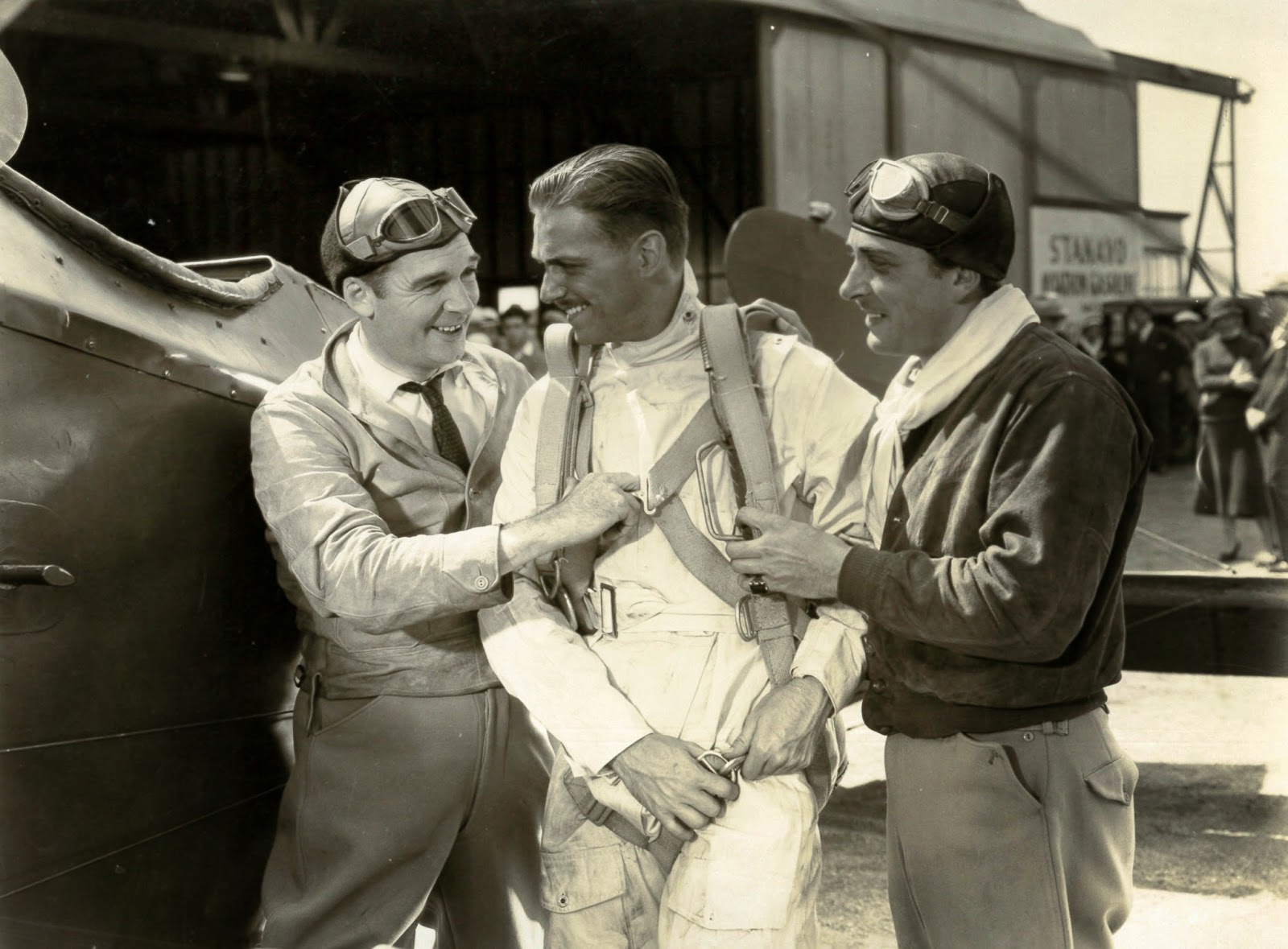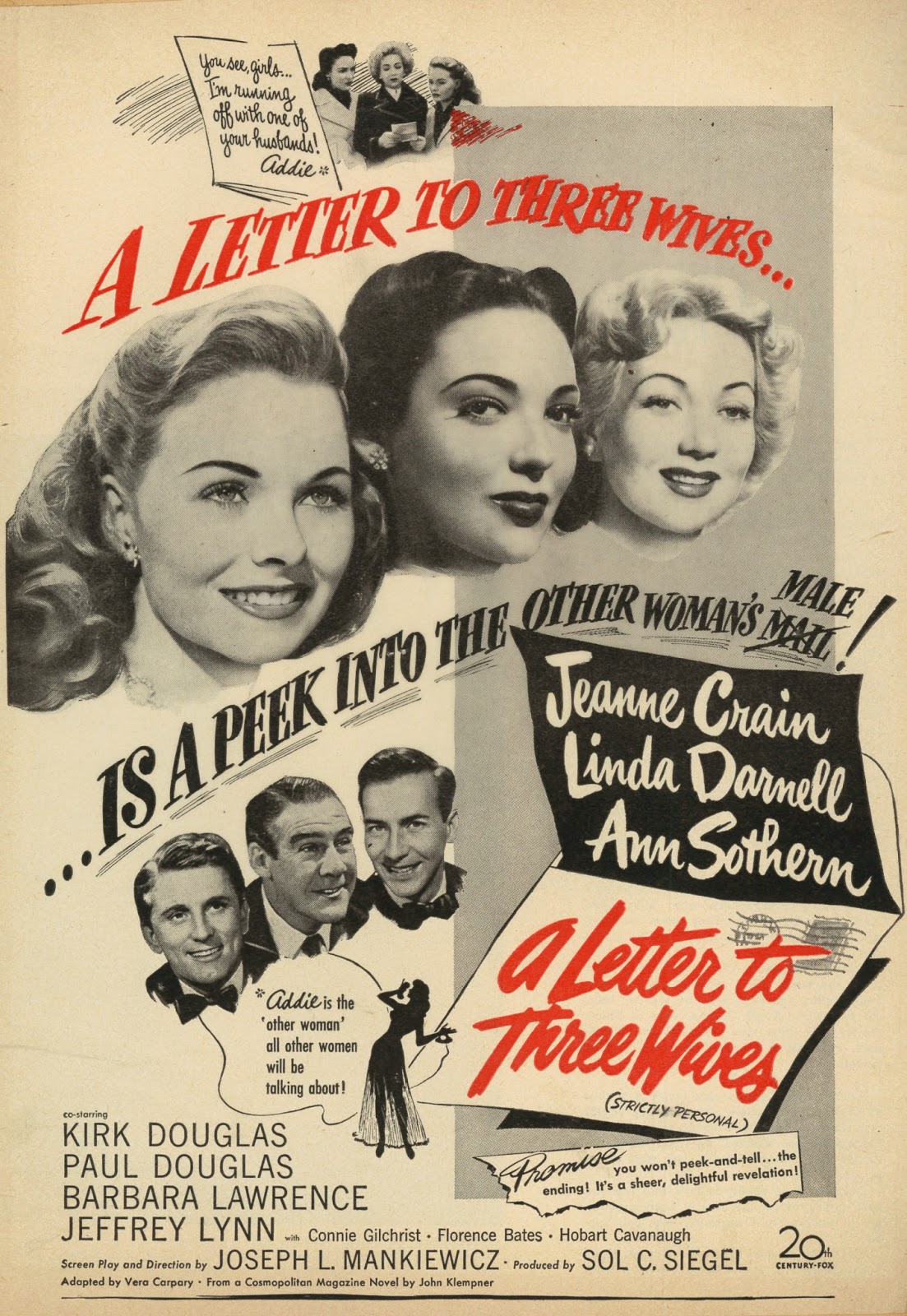December 24, 2014, 11:00 am
![]() |
| A Touring Company Circa 1931, Which Cassara Covers Thoroughly |
Nobody's Stooge Tells The Ted Healy Story![]()
↧
December 25, 2014, 8:00 am
Cartoon Roots Finds Fun In Animation Past![]()
↧
↧
December 26, 2014, 7:00 am
Precode On a Washington Merry-Go-Round (1932)![]()
↧
December 27, 2014, 7:30 am
It's A Date (1940) The Durbin That Warner Owns![]()
↧
December 28, 2014, 7:00 am
Mayhem Follows Search for Sealed Cargo (1951)![]()
↧
↧
December 29, 2014, 6:21 am
Parachute Jumper (1933) and Living By Depression Wits![]()
![]()
![]()
![]()
![]()
![]()
![]()
↧
December 30, 2014, 7:30 am
The Dark Corner (1946) Helps Usher In Postwar Noir![]()
↧
December 31, 2014, 1:53 am
Public Domain Gives Second Chorus (1940) An EncoreFred Astaire lamented that this was the movie of his that got shown the most often, thanks to its Public Domain status. I could add that Second Chorus is far from Fred's best, even as Blu-Ray now tenders first-quality image off 35mm nitrate, an Astor reissue print with original Paramount titles replaced. Paramerely distributed for producer Boris Morros, who was too busy (at international espionage?) to renew copyrights on this and The Flying Deuceswith Laureland Hardy, another independent project he'd put together in 1939. Astaire and swing music seem an uncomfortable fit, as does moody bandleader Artie Shaw, disengaged from silliness around him. Paulette Goddard tends more to plot points than dancing with Fred, a loss for us, as who cares about the story? Paramount's deal with Morris called for financing of Second Chorus (he had formerly been the studio's music director), with the negative to revert to him after general release.![]()
![]()
↧
Mission Over Korea (1953) Another Low-Budget Tour Of Duty![]()
↧
↧
Raton Pass (1951) Done While Cooper-Flynn Busy Elsewhere![]()
![]()
![]()
![]()
![]()
↧
The Man In The White Suit (1951) Raises Art House Roofs![]()
↧
Hotel (1967) Mirrors a Vanished Studio Era![]()
![]()
![]()
![]()
![]()
![]()
![]()
↧
Fox Has a Saucy Hit in A Letter To Three Wives (1949)![]()
![]()
![]()
↧
↧
January 12, 2015, 3:30 am
Trial (1956) Combats Lynch Rule and Commie Mischief![]()
![]()
![]()
![]()
![]()
↧
January 15, 2015, 4:30 am
Monsters Meet For Godzilla vs. The Thing (1964)![]()
![]()
![]()
↧
January 19, 2015, 3:00 am
The Power and The Prize (1956) Means Business![]()
![]()
![]()
![]()
![]()
↧
January 22, 2015, 8:47 am
Randolph Scott Rail-Splitting For Canadian Pacific (1949)Areal background novelty here was shooting in Canadian wilds, that seldom done by US filmmakers till independent Nat Holt sent cameras northward. Canadawas allied with Euro nations for objecting to dollars flowing out (apx. twelve million a year to US distribs), and little or nothing coming in. Hollywood answered to effect that it was lack of adequate facilities and manpower that kept Great North location off limits (there were only three lots in the whole of Canada where films could be made), but did extend olive branch in terms of features, and especially shorts, extolling beauty of Canada outdoors, this enhancing tourism to the area. What UScompanies feared was Canadafreezing funds after overseas example. Gestures toward greater cooperation were made during 1948-49, but came largely to naught, Canadian Pacific the highest profile pic shooting on Canadasoil, with Eagle-Lion's Northwest Stampede a recent wrap by time Nat Holt arrived with star Randolph Scott to build their railroad. Holt had a deal with 20th to supply three so-called "B pix" the company would distribute, another to come via producer Edward Alperson. Fox was not in a habit of handling outside product, so this was out of ordinary policy for the major.![]()
![]()
![]()
![]()
↧
↧
January 23, 2015, 7:21 am
Tall Man Riding (1955) More Of A Successful Same![]()
↧
January 26, 2015, 7:06 am
Champion (1949) Is Bare Knuckle Noir![]() |
| N.Y. Open, and K. Douglas Attends |
The muscular hit that clinched stardom for Kirk Douglas and spilled blood (and green) into the boxing genre. Champion took two million in domestic rentals and that meant payday for far less spent to make it. Douglas is his patented "heel," a persona he'd soften as mainstream stardom beckoned (KD and R. Widmark both saw images tenderized toward similar ends). Champion is a flashy showcase and mimics would work off the Kirk grimace over nights, and nightclubs, to come (do any still?). Gritty is the byword, as in boxcars, beatings, women wronged, and wronging. Late 40's cynicism can be fun in moderation. Watch too many, however, and there's threat you'll go around trusting nobody. How did they fake ring action? Punches here look like they really connect. Ruth Roman, formerly of serials, is a nice girl besullied. No wonder Warners called after this, though she'd light somewhat less fire for them. KirkDouglas says he chose Champion over The Great Sinner for Metro, proud of a smart move he'd made, as who remembers The Great Sinner? Champion isn't recognized as noir, but there are crook gamblers and damp asphalt, so I'll call it that for ease of reference. Indifferent prints have long been bane of this title (some colorized); also a particularly bad DVD in longtime circulation, but now comes Olive with splendidly wrought Blu-Ray that puts color (as in nice-rendered B/W) back in Champion's cheeks.
↧
January 29, 2015, 3:30 am
Copy (1929) Has Newshounds In Natural Habitat![]()
↧






































































